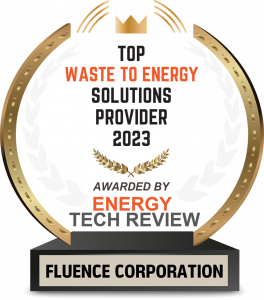
The Moro Dairy Farm in Treviso, Italy, uses an anaerobic digester to produce biogas from milk wastes.
With anaerobic digestion, surplus whey can be used to produce biogas and to fuel electrical generators
For each ton of raw milk processed, the dairy industry generates anywhere from 0.4 to 60 m³ of wastewater that typically has been discarded. But, the industry has, as the saying goes, been throwing the baby out with the bathwater. Dairy wastewater contains large quantities of valuable energy that more companies around the world are finally beginning to tap.
Dealing With Milk Wastes
Producing 1 pound of cheese leaves 9 pounds of whey as a byproduct, but disposal of whey and other dairy waste is typically costly, and compliance with environmental regulations can be difficult. Whey regulations in California have led some dairies to stop making cheese. Imperial Valley Cheese, for instance, was driven out of business in 2013 because it could not find an affordable way to dispose of its whey.
Some companies filter the lactose and sugar out of the whey and sell it to other companies or use it to make livestock feed supplement. But the cost of the process can be high and factory-to-farm arrangements can be costly. Greek yogurt company Chobani recycles all of its whey, but it must often pay local farmers $300 per 6,000 gallon truckload just for the privilege of giving it to them. The booming Greek yogurt industry produces a less desirable “acid whey” that is not as rich in potential food ingredients as cheese is, but still contains a high enough nutrient load to cause fish kills if it makes its way into surface water bodies.
Waste-to-Energy for Hard-to-Treat Waste Streams
Using whey to generate power, however, alleviates many of those issues and helps operations offset their energy needs. Fabio Poletto, a Fluence engineer who specializes in whey treatment, explained more about acid whey in an interview with Water Online:
The main problem with this kind of whey is the acidity that prevents recovery of valuable products like whey protein concentrate or milk powder. A [waste-to-energy] facility allows recovery of the energy contained in this byproduct as biogas. At the same time, the process removes 90 percent of the organic load. […] One cubic meter of acid milk whey can produce 20.5 cubic meters of methane.
That’s a win for the bottom line and the environment.
The large Fage Greek yogurt factory in Johnstown, New York, pipes its acid whey to the city’s nearby municipal wastewater treatment plant, which uses an anaerobic digester to create biogas, which is rich in valuable methane. The digester uses bacteria to consume whey’s organic load. Wastewater treatment engineer Charles Bevington explained:
Anaerobic digesters love sugar, they love milk, they love beer. Anything you can put in a digester that’s high-strength waste, bacteria love to eat it.
In another case study, an anaerobic digester sized to treat 100 m³ of milk whey a day produces up to 7,200 kWh/d of electrical energy and 7,200 kWh/d of thermal energy.
Investing in Waste-to-Energy
Although it may be expensive, many consider anaerobic digestion the best way to process large amounts of whey. Bob Willis, owner of Clock Shadow Creamery and Cedar Grove Cheese in Wisconsin, told Think Progress that converting whey into power makes sense for smaller dairy operations like his, as well as larger operations:
By sending the whey and the wash water to the digester, we end up being a net-energy generating business. […] There is a surplus of energy beyond what we use in our production process that is enough to run somewhere between five and 10 houses for a year.
Fluence has three decades of experience delivering waste-to-energy solutions, calculating operating and capital costs, and projecting a facility’s performance. All treatment packages are tailored to your unique wastewater stream and regulatory environment, and Fluence has a proven record of upgrading operations with no break in production. Contact our experts to learn more.

